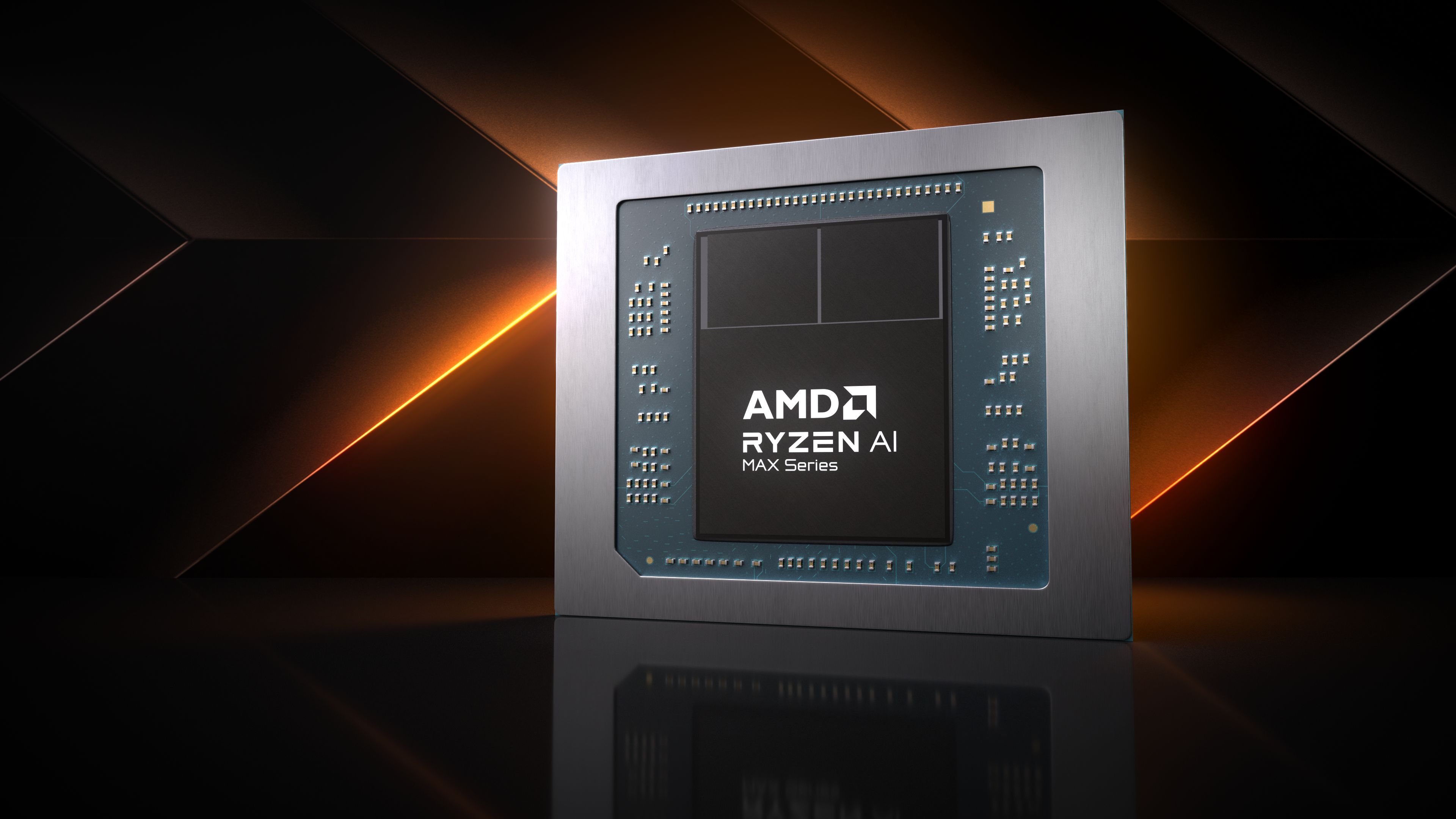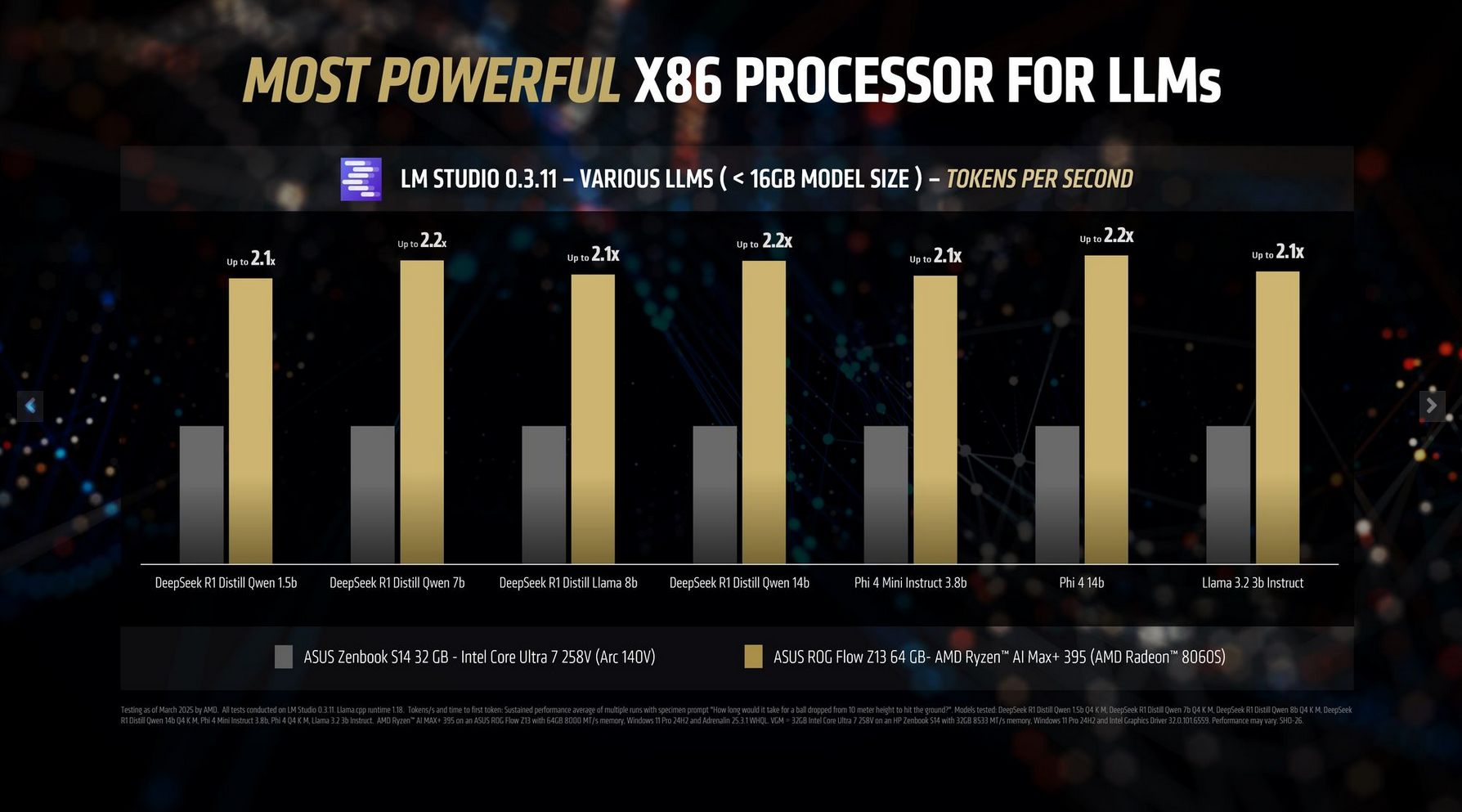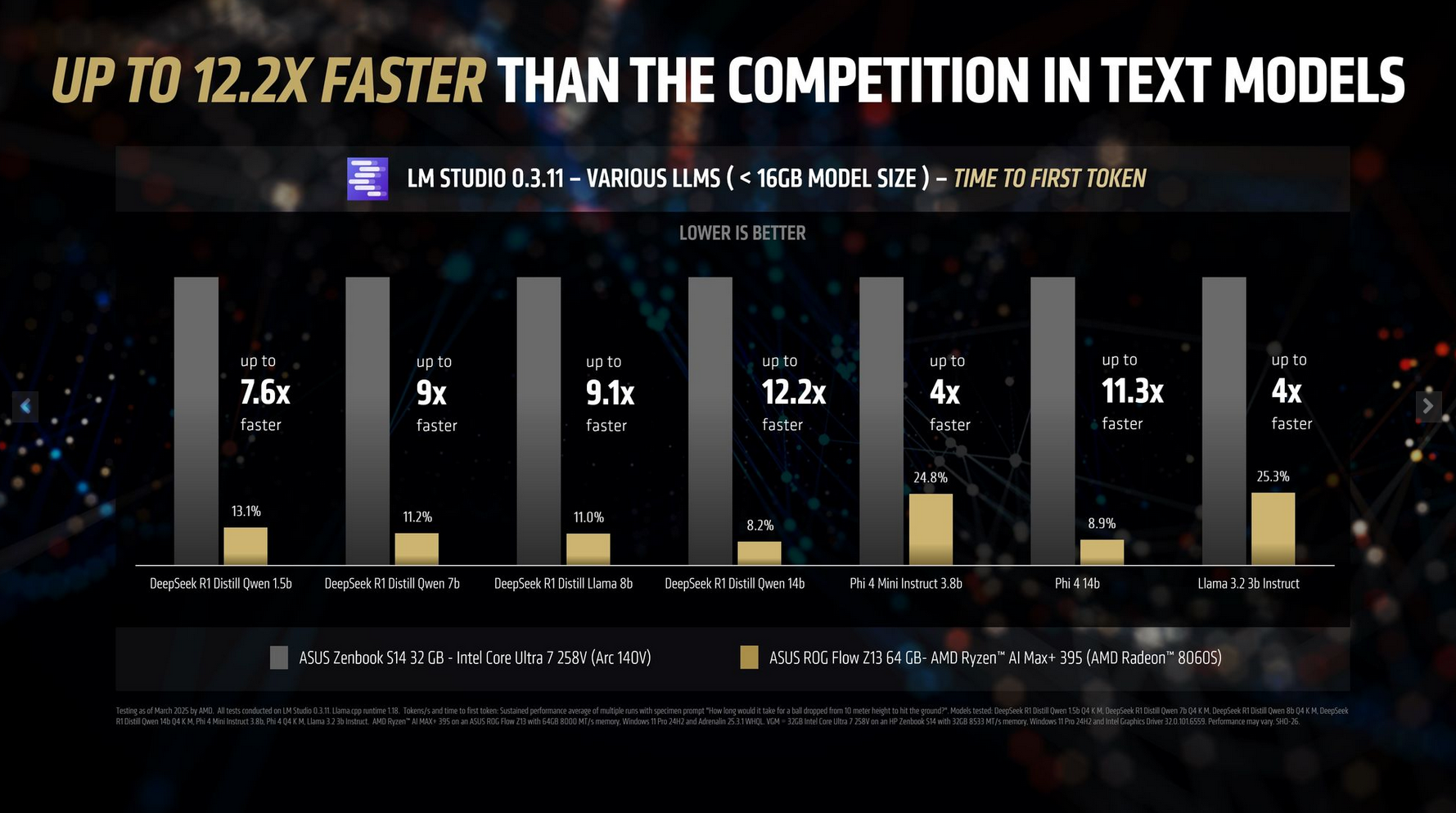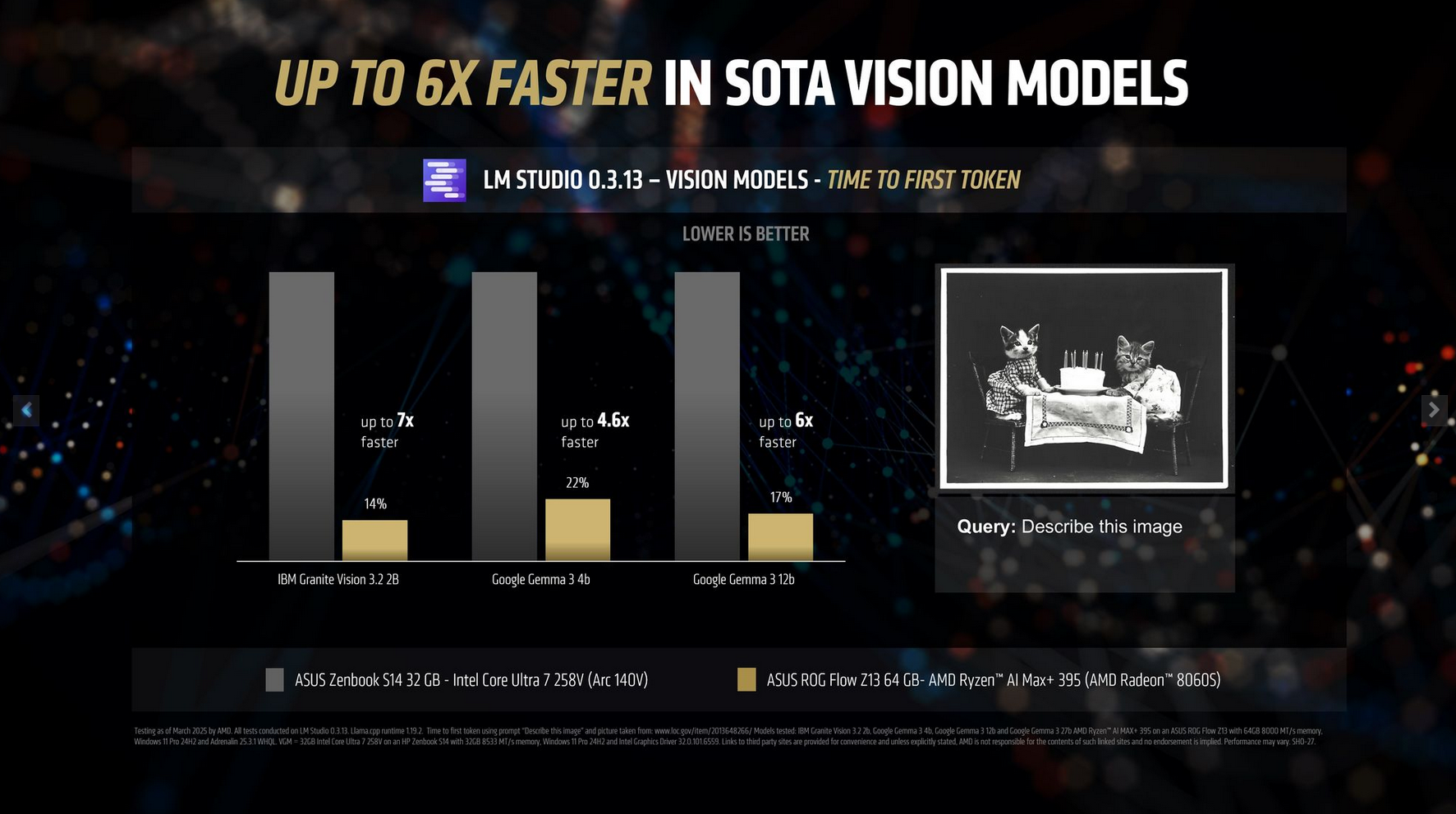AMD boasts its Ryzen AI Max+ 395 is up to 12.2x faster than Lunar Lake in AI workloads
Ryzen chip consumes more than 3x the power, but fits in the same thin-and-light form factor as Lunar Lake competition.

AMD's fire-breathing Ryzen AI Max+ 395 allegedly crushes Intel's latest efficiency-focused Lunar Lake CPUs in AI benchmarks. An AMD blog post claims the new Zen 5 + RDNA 3.5 chip is up to 12.2x faster than the Core Ultra 7 258V.
AMD benchmarked the Ryzen AI Max+ 395 and Core Ultra 7 258V (with Arc 140V graphics) in a variety of large language models and LLM configurations, including DeepSeek R1 and Llama. Model sizes were restricted to 16GB to offer a fairer comparison against Lunar Lake-powered laptops with 32GB of memory (the highest memory configuration available for these devices). An Asus ROG Flow Z13 64GB was used for the Ryzen AI Max+ 395 test system, and an Asus Zenbook S14 32GB was used for the Core Ultra 7 258V test system.



In DeepSeek R1, the Ryzen chip was up to 2.1x faster (measured in tokens per second) than the Intel counterpart using Distill Qwen 1.5b, up to 2.2x faster using Distill Qwen 7b; up to 2.1x faster using Distill Llama 8b; and up to 2.2x faster using Distill Qwen 14b. In Phi 4 Mini Instruct 3.8b, the Ryzen chip was up to 2.1x faster than the Intel Lunar Lake chip; up to 2.2x faster in Phi 4 14b; and up to 2.1x faster in Llama 3.2 3b Instruct.
In the same LLM configurations but benchmarking the "time to the first token," the Ryzen AI Max+ 395 was up to 12.2x faster in DeepSeek R1 Distill Qwen 14b. The Zen 5 chip's least-performant dominance was in Phi 4 Mini Instruct 3.8b and Llama 3.2 3b Instruct, where the AMD chip was "only" 4x faster than the Core Ultra 7 258V.
AMD showed similar dominance in AI vision models using the same "time to the first token" benchmarking technique. In IBM Granite Vision 3.2 2B, the 395 was up to 7x faster than the 258V, up to 4.6x faster in Google Gemma 3.4b, and up to 6x faster in Google Gemma 3 12b.
AMD's benchmarks show complete dominance of its Ryzen AI Max+ 395 against the Core Ultra 7 258V in AI benchmarks. This is all thanks to the Ryzen AI Max CPU's significantly more powerful integrated graphics chip (which rivals discrete graphics with its 40 RDNA 3.5 CUs), eight more CPU cores, and its significantly higher configurable TDP (rated up to 120W). Even though it consumes significantly more power than the Core Ultra 7 258V (which has a max turbo power of 37W), both chips operate in the same market, and are compatible in the same thin-and-light category of laptop PCs.
It will be interesting to see how the new AMD mobile APUs shape up against Nvidia's RTX 50-series mobile GPUs, which are reportedly facing supply chain issues, delaying their launch in upcoming RTX 50 series gaming laptops. On a pure performance level (not considering form factor), these new Nvidia-powered systems will be AMD's primary competition.
AMD is allegedly well on its way to handling discrete GPU competition, as it already advertised superior AI performance on the Ryzen AI Max+ 395 against Nvidia's RTX 4090 laptop GPU.
Get Tom's Hardware's best news and in-depth reviews, straight to your inbox.

Aaron Klotz is a contributing writer for Tom’s Hardware, covering news related to computer hardware such as CPUs, and graphics cards.